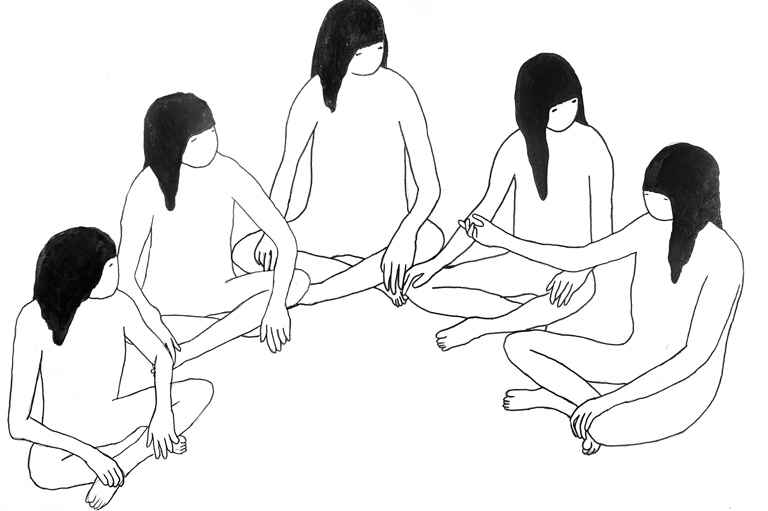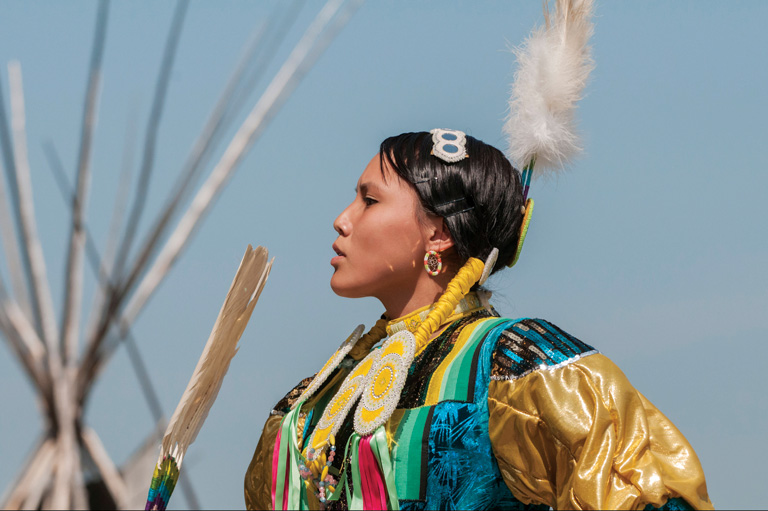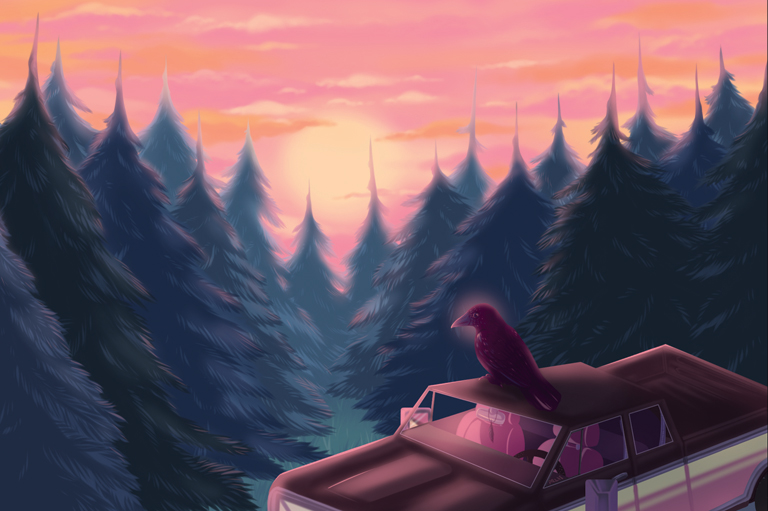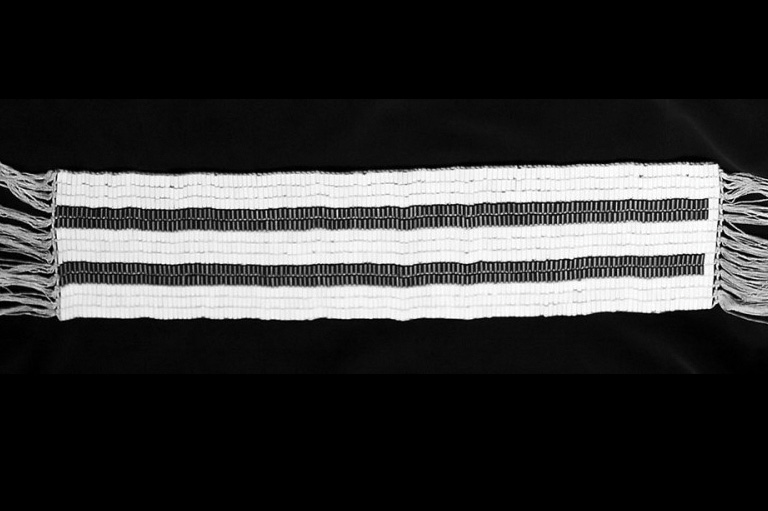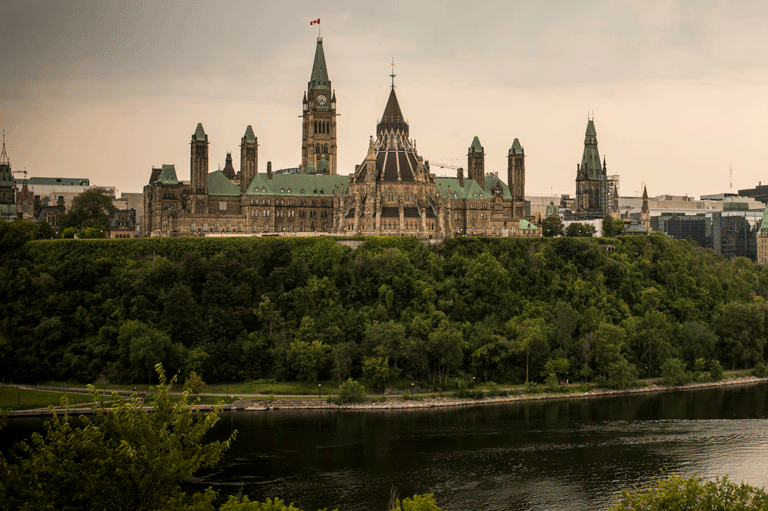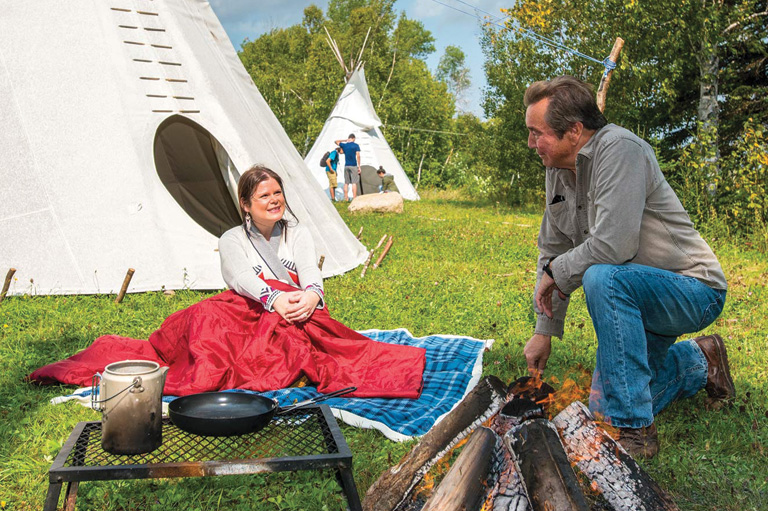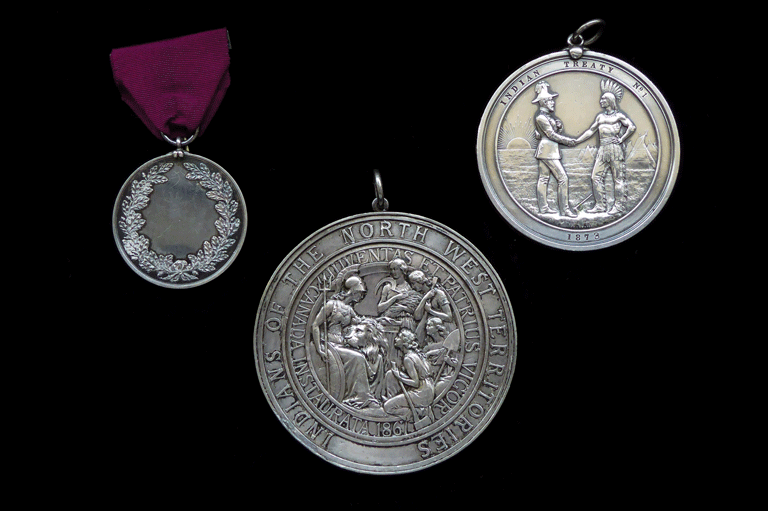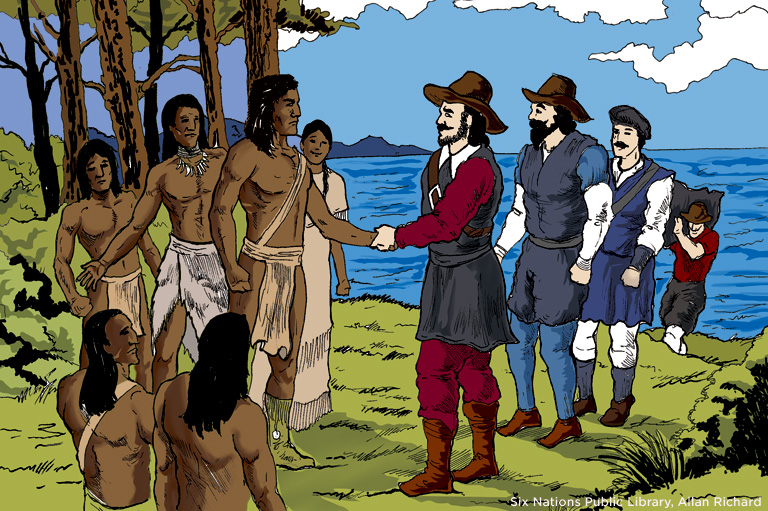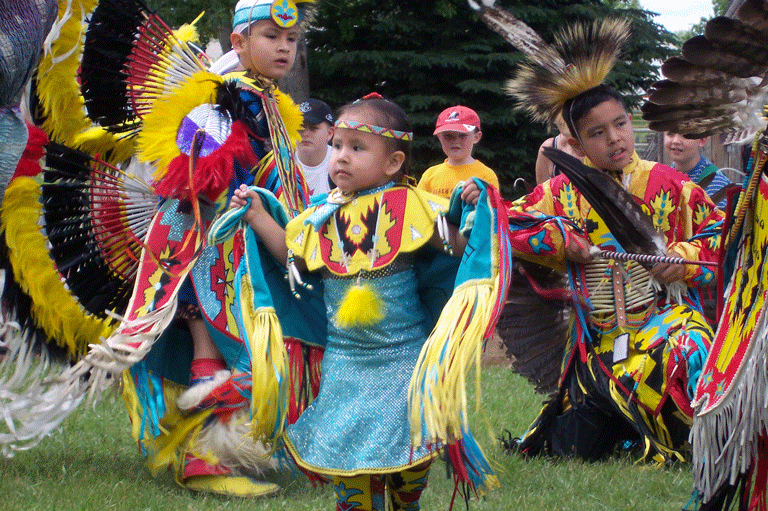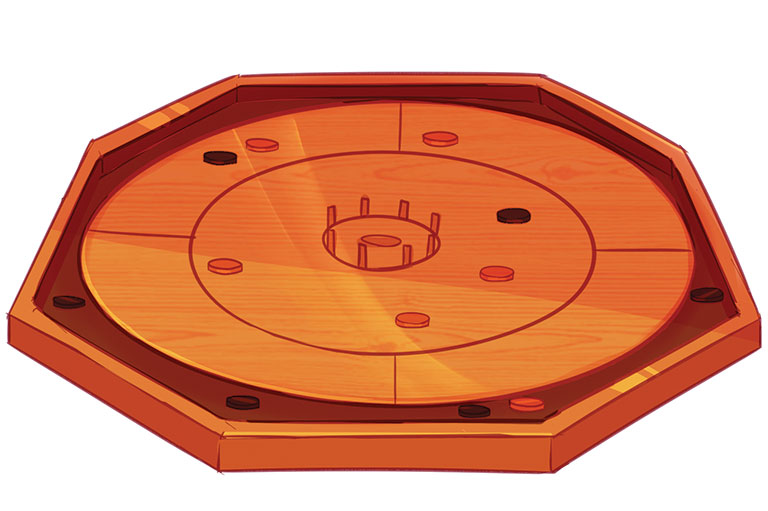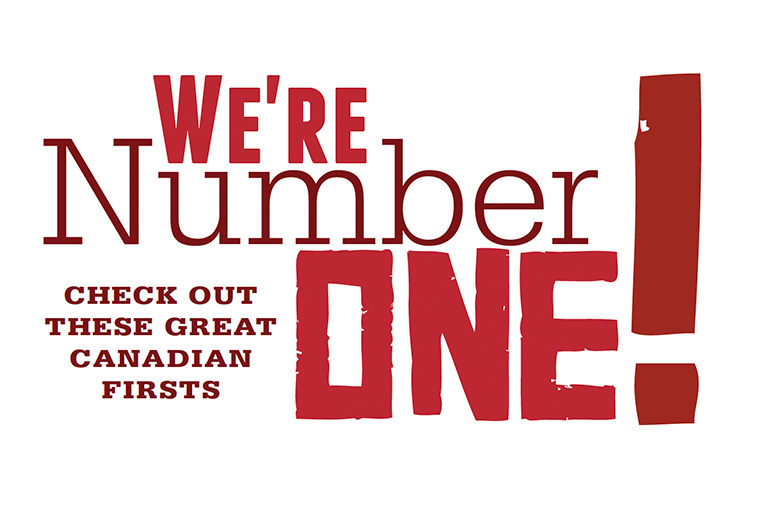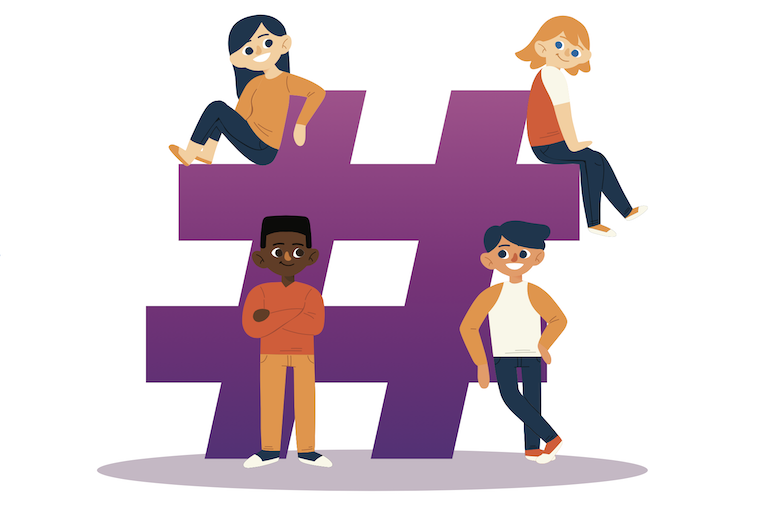Making Treaties
See “What is a Treaty” on pages 4 and 5 in the We Are All Treaty People issue of Kayak: Canada’s History Magazine for Kids.
Read
A Treaty is much more than a piece of paper with words on it – that’s why we talk about making Treaties, rather than just signing them. A Treaty includes all the spoken words the First Nations and government people used to make promises. These words were about the land, how it would be shared and for what purposes. The Treaty was then sealed through a pipe ceremony which invited the Creator to witness the promises.
Minds on
Explore the idea of historical perspective with the students. Taking a historical perspective means understanding the social, cultural, intellectual, and emotional settings that shaped people’s lives and actions in the past.
Hands on
Give students cue cards with either First Nation or Crown written on the front; one card per student (half the class should have one, half the other). On the opposite side of the card, instruct them to print single words or sketch the perspectives held by that group regarding Treaty-making and the Treaty relationship.
More classroom activities
Themes associated with this article
Advertisement
You might also be interested in...
This issue, as well as the corresponding educational resource package, can be found on the French side of our site.

Encouraging a deeper knowledge of history and Indigenous Peoples in Canada.
The Government of Canada creates opportunities to explore and share Canadian history.

The Winnipeg Foundation — supporting our shared truth and reconciliation journey.
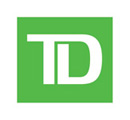
We contribute to the well-being of the communities we serve through grants, scholarships, sponsorships, fundraising, volunteering and collaborative relationships with community partners.

